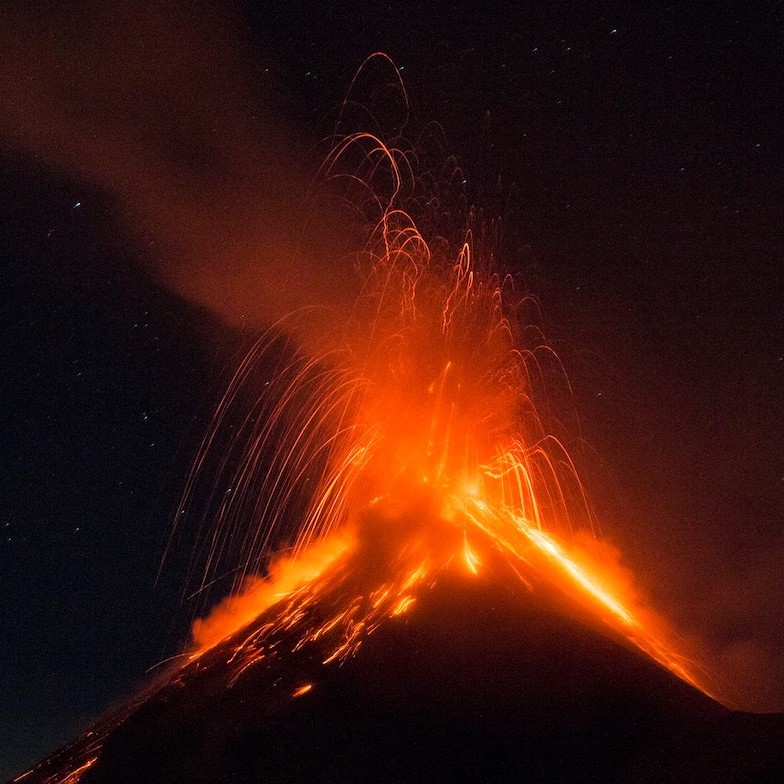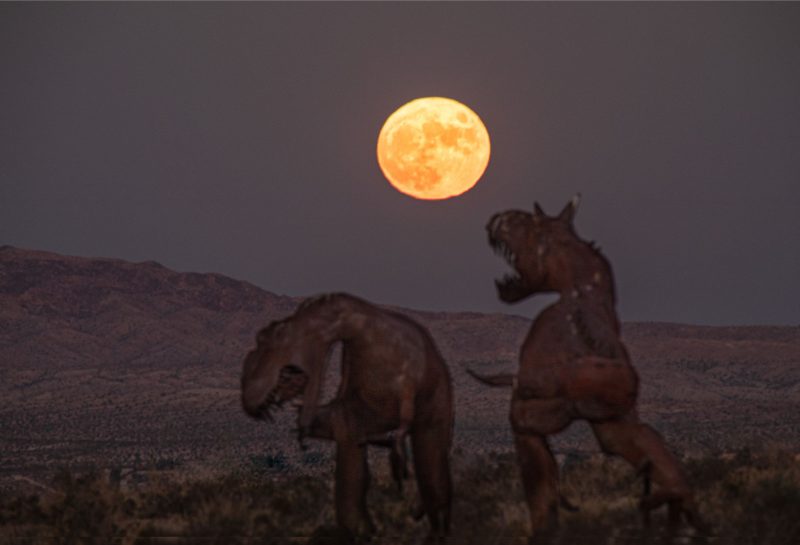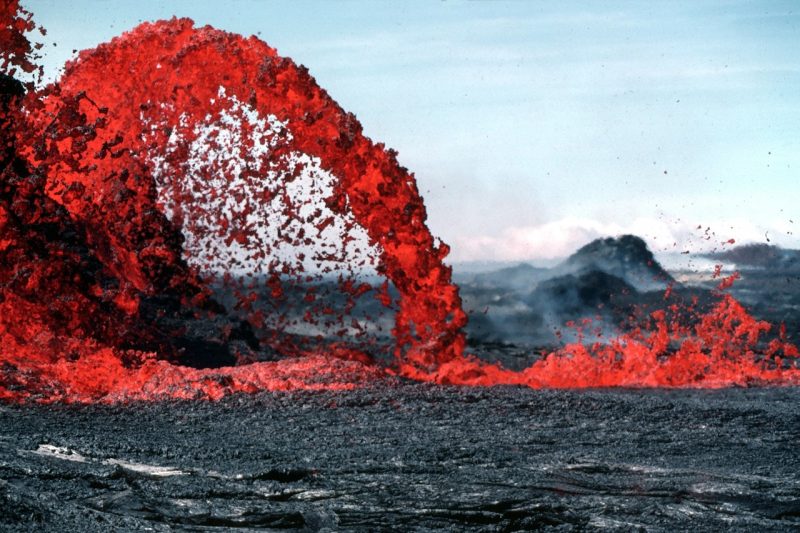
Dino death double whammy
The conventional wisdom of recent decades has pointed to an asteroid impact as the reason the dinosaurs disappeared. The smoking gun has been a large crater found in the 1970s to be buried beneath the Yucatan Peninsula. Chicxulub crater looks like the site of an asteroid impact some 66 million years ago, the same time the dinosaurs disappeared. But researchers at Dartmouth College said this week (September 12, 2022), that we can’t rule out mega volcanoes as a factor in the dinosaurs’ disappearance. They said mega volcanoes were a key driver in major mass extinctions throughout Earth’s history. Four of Earth’s five great extinctions happened just as mega volcanoes created the vast ancient lava flows we see on Earth today as flood basalts, they said. And they suggested the mass extinction that took out the dinosaurs was due to a double whammy from both volcanoes and an asteroid strike.
The researchers included Theodore Green, formerly of Dartmouth College and now at Princeton, and Brenhin Keller of Dartmouth College. They published their study on September 12, 2022, in the peer-reviewed journal Proceedings of the National Academy of Sciences.
Mega volcanoes caused mass extinctions
Scientists have long debated the source of Earth’s great mass extinctions. Massive volcanic activity that spews dust and toxic fumes into Earth’s atmosphere was a long-time culprit. But the discovery of the Chicxulub crater on the Yucatan Peninsula in the 1970s – and subsequent studies of the crater – turned the focus to asteroids or comets from space. Keller said:
All other theories that attempted to explain what killed the dinosaurs got steamrolled when the crater the asteroid had gouged out was discovered.
Yet there’s little evidence of other impacts that coincide with the other mass extinctions. So, Green used supercomputers to quantify a link between eruptions and extinctions. He determined the link was not coincidence but a causal relationship. As the announcement said:
Their study provides the most compelling quantitative evidence so far that the link between major volcanic eruptions and wholesale species turnover is not simply a matter of chance.
Or, as Keller said:
Our results make it hard to ignore the role of volcanism in extinction.

Large igneous provinces
Four of the five mass extinctions occurred while flood basalts from volcanoes covered large areas of Earth. These flood basalts happened in a small amount of time – a million years – in the geologic timescale. We see the evidence of these mega eruptions today in step-like, igneous rock called large igneous provinces. To fit the definition, a large igneous province must contain at least 100,000 cubic kilometers of magma. For comparison, the Mount St. Helens eruption of 1980 that exploded the side of the mountain and blackened skies produced less than one cubic kilometer of magma.
Two well-studied large igneous provinces are in what is now Siberia and west-central India. In Siberia, eruptions released a gigantic pulse of carbon dioxide, choking off life about 252 million years ago. Today, the Siberian Traps – approximately the size of Australia – are what remains. The Deccan Traps in India was an active volcanic region around the time dinosaurs went extinct. These volcanoes blanketed the atmosphere in dust and toxic fumes, asphyxiating most life. Green said:
It seems like these large igneous provinces line up in time with mass extinctions and other significant climactic and environmental events.

Crunching the numbers
The researchers used supercomputers to run the numbers. They took the best estimates for flood basalt eruptions and periods of extinction. But they also compared the eruptions to 100 million randomly generated patterns. Green said:
Less than 1% of the simulated timelines agreed as well as the actual record of flood basalts and extinctions, suggesting the relationship is not just random chance.
The researchers also ordered the events by the rate at which they spewed lava. This led to the finding that the ones with the highest eruptive rates did indeed cause the most destruction, which indicated a causal link.
Then they ran the numbers for asteroids, finding that the link between impacts and extinctions was much weaker. Even without the Chicxulub asteroid, the dinosaurs were facing extinction when the researchers just looked at the eruption rate of the Deccan Traps. But with the asteroid, it was a “double whammy” and a “death knell.”
Carbon dioxide in Earth’s atmosphere today
Flood basalts weren’t common, and the last one of comparable scale happened some 16 million years ago in the Pacific Northwest. But the carbon dioxide released from them and caused extinctions is a warning from the past. Today, large releases of carbon dioxide come from a different source: burning fossil fuels. Keller said:
While the total amount of carbon dioxide being released into the atmosphere in modern climate change is still very much smaller than the amount emitted by a large igneous province (thankfully), we’re emitting it very fast, which is reason to be concerned.

Bottom line: A new study says that dino death on Earth – 66 million years ago – was due to a one-two punch from both an asteroid strike and mega volcanoes.
Source: Continental flood basalts drive Phanerozoic extinctions
Read more: Did a second asteroid help kill the dinosaurs?
The post Dino death due to volcano-asteroid double whammy first appeared on EarthSky.
0 Commentaires